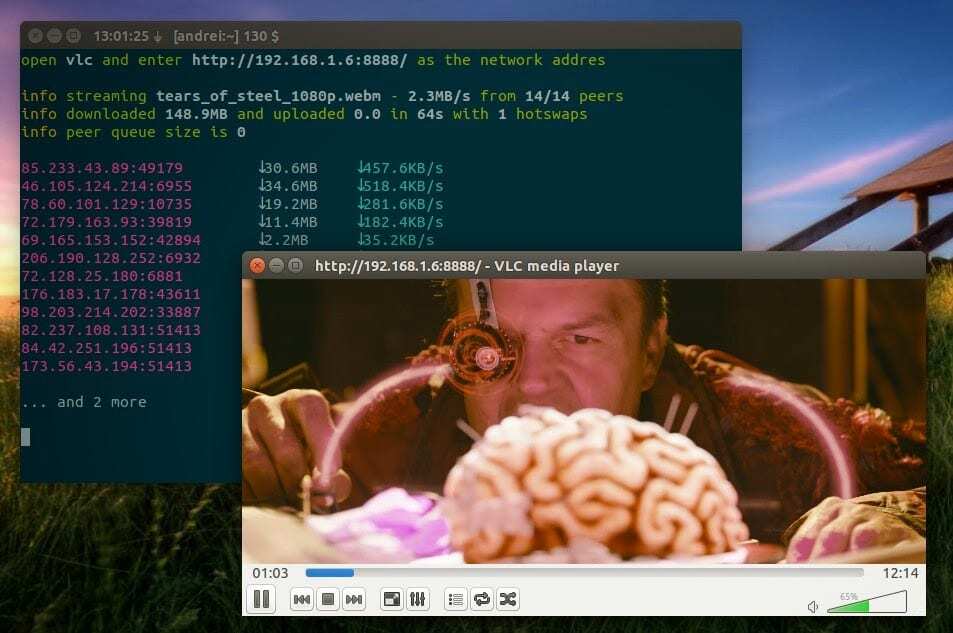DOWNLOAD
Safe VPN
Steps to be safe with VPN
- WeePN: 10 Devices.
- 100+ Countries.
- Home Router Security
Safe VPN for You
Safe VPN for You
Safe VPN for You
Safe VPN for You
Safe VPN for You
Safe VPN for You
- Strong Encryption: Uses robust encryption protocols (like AES-256) to scramble your data and make it unreadable to eavesdroppers.
- No-Logs Policy: Does not track or store your browsing activity, IP address, connection timestamps, or other sensitive information. Crucially, this policy needs to be proven through independent audits and real-world tests (e.g., successfully resisting government requests for data).
- Jurisdiction: Operates from a country with strong privacy laws and minimal government surveillance. Ideally, it should be outside the “14 Eyes” intelligence-sharing alliance.
- Kill Switch: Automatically disconnects your internet connection if the VPN connection drops, preventing your IP address from being exposed.
- DNS Leak Protection: Ensures that your DNS requests are routed through the VPN server, preventing DNS leaks that could reveal your true location.
- Reputation and Transparency: Has a good reputation within the security community and is transparent about its ownership, business practices, and security measures.
- Secure Protocols: Offers modern and secure VPN protocols like WireGuard, OpenVPN, and IKEv2/IPSec. Avoids outdated or less secure protocols like PPTP.
- Regular Security Audits: Undergoes regular, independent security audits to verify its security claims and identify potential vulnerabilities.
- Protection Against Leaks: Offers strong protection against WebRTC, IPv6 and DNS leaks.

Safe VPN for You
Safe VPN for You
Safe VPN for You
Safe VPN for You
Safe VPN for You
Safe VPN for You
How Keys Are Generated in Open Source VPNs (Primarily OpenVPN):
OpenVPN, one of the most popular open-source VPNs, uses a Public Key Infrastructure (PKI) for authentication and encryption. The key generation process involves several steps:
1. Creating a Certificate Authority (CA):
OpenVPN, one of the most popular open-source VPNs, uses a Public Key Infrastructure (PKI) for authentication and encryption. The key generation process involves several steps:
1. Creating a Certificate Authority (CA):
- Tthe Certificate Authority (CA) is a trusted entity that issues and verifies digital certificates for the VPN server and its clients. Tools like openssl or easy-rsa simplify CA operations.
- The process involves creating a CA private key (ca.key) and a self-signed CA certificate (ca.crt). The CA private key must be kept strictly secret, as it allows the signing of any other certificates.
- easy-rsa typically provides scripts for this, such as build-ca.
- A private key (server.key) is generated on the VPN server.
- A Certificate Signing Request (server.csr) is created based on this key. The CSR contains information about the server (e.g., Common Name - the server’s domain name or IP address).
- easy-rsa provides scripts like build-server-full <servername> to simplify this process.
- The server’s CSR (server.csr) is signed with the CA’s private key (ca.key) and CA certificate (ca.crt).
- This creates the server certificate (server.crt), which verifies that the VPN server is who it claims to be.
- easy-rsa provides scripts like sign-server <servername> to simplify the signing process.
- A unique private key (client.key) is generated for each VPN client.
- A Certificate Signing Request (client.csr) is created for each client based on their unique private key.
- easy-rsa provides scripts like build-client-full <clientname> to simplify this process.
- The client’s CSR (client.csr) is signed with the CA’s private key (ca.key) and CA certificate (ca.crt).
- This creates the client certificate (client.crt), which allows the client to authenticate with the VPN server.
- easy-rsa provides scripts like sign-client <clientname> to simplify the signing process.
- This key is used to protect against Denial-of-Service (DoS) attacks and to enhance the security of the control channel.
- The HMAC key (ta.key) is created using the command openssl dhparam -out ta.key 2048.
- Clients need to be provided with an OpenVPN configuration file (.ovpn), which contains information about the server (IP address, port), the protocols and encryption algorithms used, as well as the CA certificate (ca.crt), the client certificate (client.crt), the client’s private key (client.key), and, if necessary, the HMAC key (ta.key).
Safe VPN for You
Safe VPN for You
Safe VPN for You
Safe VPN for You
Safe VPN for You
Safe VPN for You
We work with love
Quality
We are a highly prominent and respected company dedicated to consistently delivering excellence and significant worth to our valued .
Experience
Our team leverages 5+ years of legal experience per member to provide expert .
Presents
We enjoy bringing joy to others. We inquire with our customers about presents

Support
Our team leaders are consistently available to respond to your inquiries. Feel free to reach out to us over the weekends
Flexibility
This approach enables us to attain success in challenges of every degree.
Efficiency
We value our clients' time. Reach out to us, and we'll assist you with any inquiries.
Safe VPN for You
Safe VPN for You
Safe VPN for You
Safe VPN for You
Safe VPN for You
Safe VPN for You
Emphasis on Technology & Security
Leveraging innovative technology, WeePN ensures your devices are shielded from malware and your online activities remain private. Our robust encryption would take billions of years to crack.
More Technical Sounding
WeePN utilizes advanced technology to provide robust malware protection and keep your online activities private. Our encryption employs a key space so large that even the most powerful computers would require billions of years to crack it.
WeePN’s advanced technology protects your devices from malware and keeps your online activity private. Our military-grade encryption is virtually unbreakable.
Concise & Benefit-Driven

Safe VPN for You
Safe VPN for You
Safe VPN for You
Safe VPN for You
Safe VPN for You
Safe VPN for You
Why VPN
WeeVPN for Android
With WeePN, you can browse with complete peace of mind — because no one’s watching. We don’t track your online activity (and independent audits back that up). For even greater privacy, you can double your protection by connecting to Double VPN servers, which encrypt your data and change your IP address twice.
WeeVPN for iOS
Utilize both torrents for downloading files and streaming services for watching various types of content in order to enhance your overall viewing experience, thereby maximizing the versatility and richness of your media consumption while ensuring that you have access to a wide array of entertainment options to suit your preferences
WeeVPN for Mac
WeeVPN for Windows
We recognize that you have messages to dispatch, challenges to tackle, and content to enjoy. This is why WeePN offers super-speed connection rates. Relish unrestricted data, entry to a multitude of servers globally, and advanced VPN protocols that guarantee a smooth, uninterrupted online journey.
WeePN uses advanced technology to protect your devices from malware and shield your online activities from prying eyes. Even the most powerful computers would take billions of years to decrypt your information, ensuring top-level security.
1
5
4
3
2
Secure Protocols: Offers modern and secure VPN protocols such as WireGuard, OpenVPN, and IKEv2/IPSec. These protocols use strong encryption algorithms to protect your data from eavesdropping and ensure a secure connection.


Secure Protocols: Offers modern and secure VPN protocols, giving you the flexibility to choose the best option for your needs. Options include WireGuard for speed, OpenVPN for reliability, and IKEv2/IPSec for mobile devices.

Secure Protocols: Our service offers a selection of modern and highly secure VPN protocols, including advanced options like WireGuard and OpenVPN, while diligently avoiding the use of outdated and vulnerable protocols such as PPTP that pose security risks. This careful selection ensures that users benefit from a robust, efficient, and secure VPN connection that protects their data and privacy effectively.

Secure Protocols: Offers modern and secure VPN protocols engineered with robust encryption algorithms and authentication methods. These protocols are designed to withstand modern security threats and protect your data from interception.
WeePN keeps your devices safe from malware and your browsing private with cutting-edge technology. Our encryption is so strong, it’s practically uncrackable.

Key Considerations:
- Not All VPNs Are Created Equal: Choose a reputable VPN provider with a strong track record of security and privacy. Research the company’s logging policy, jurisdiction, and security features before signing up.
- Speed Impact: Using a VPN can sometimes slow down your internet speed, especially if you connect to a server that is located far away.
- Legal Restrictions: In some countries, VPNs are restricted or illegal. Be sure to check the laws in your country before using a VPN.

Other Potential Benefits:
- Bypass ISP Throttling: May help to bypass ISP throttling, which is when your internet service provider intentionally slows down your connection speed for certain types of traffic. (Though this is not guaranteed and depends on the ISP).
- Secure Online Gaming: Protects your IP address and prevents DDoS attacks while gaming online.
- Cheaper Flights & Travel: Sometimes, VPNs can help you find cheaper flights or hotel deals by changing your virtual location. (Results vary).
- Safe Torrenting: Allows for safer torrenting by hiding your IP address from other users in the torrent swarm. (But always be mindful of copyright laws).

Reduced Subscription Costs through the use of a VPN is a compelling advantage, particularly for consumers looking to optimize their spending on various online services. Here’s a detailed look at how VPNs can facilitate savings:
1. Geographical Price Discrimination
1. Geographical Price Discrimination
- Variable Pricing: Many online services, especially streaming platforms, apply different pricing based on the user’s geographic location. For instance, services like Netflix or Hulu may charge different rates in the U.S. versus other countries.
- Access to Regional Pricing: By connecting to a VPN server in a different country, users can access local prices, which may be significantly lower. For example, a subscription that costs $15 in one region might be available for $10 in another.




